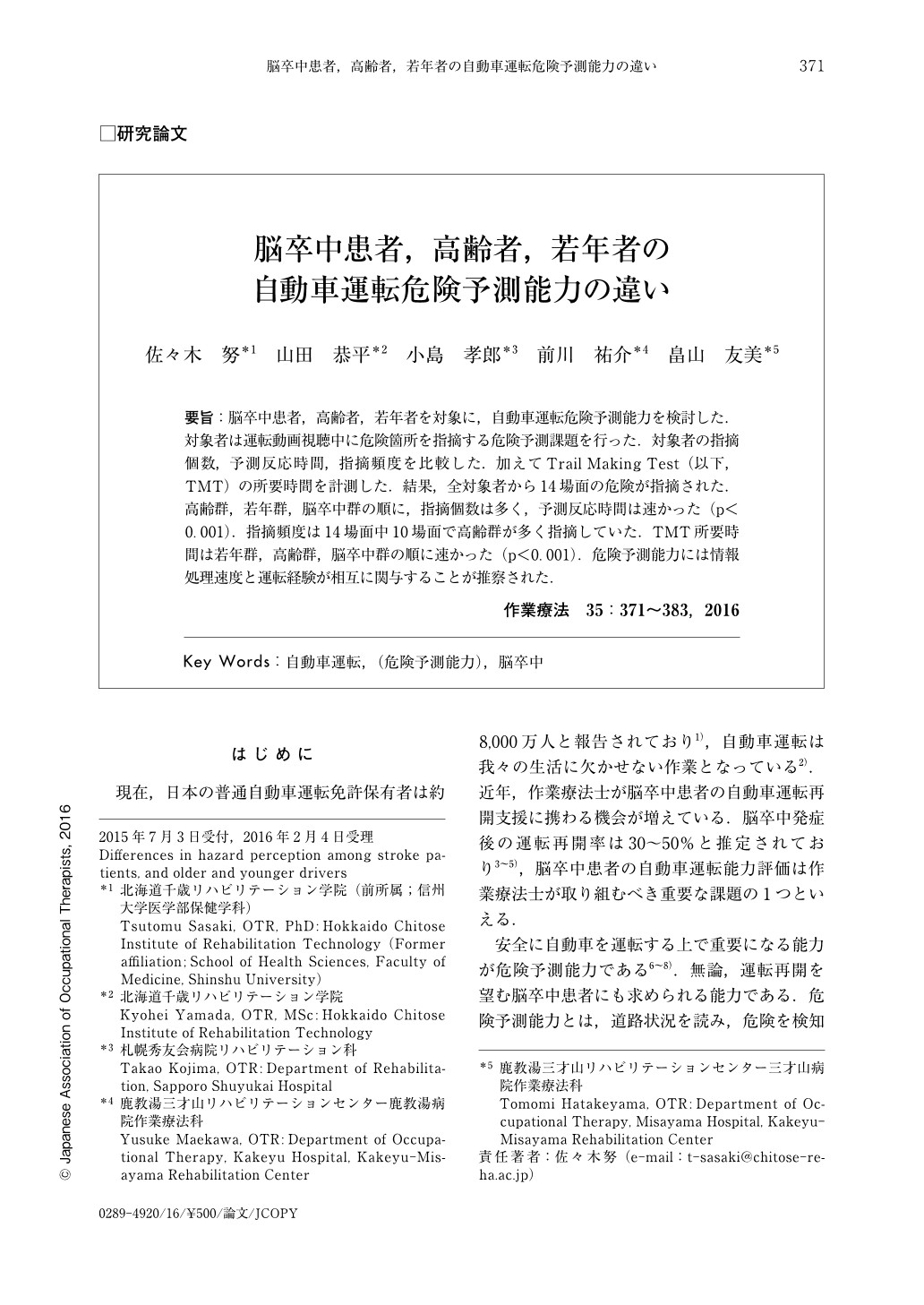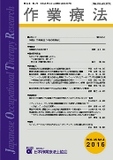Japanese
English
- 販売していません
- Abstract 文献概要
- 1ページ目 Look Inside
- 参考文献 Reference
要旨:脳卒中患者,高齢者,若年者を対象に,自動車運転危険予測能力を検討した.対象者は運転動画視聴中に危険箇所を指摘する危険予測課題を行った.対象者の指摘個数,予測反応時間,指摘頻度を比較した.加えてTrail Making Test(以下,TMT)の所要時間を計測した.結果,全対象者から14場面の危険が指摘された.高齢群,若年群,脳卒中群の順に,指摘個数は多く,予測反応時間は速かった(p<0.001).指摘頻度は14場面中10場面で高齢群が多く指摘していた.TMT所要時間は若年群,高齢群,脳卒中群の順に速かった(p<0.001).危険予測能力には情報処理速度と運転経験が相互に関与することが推察された.
We studied the differences of hazard perception ability among stroke, older, and younger drivers. A hazard perception task was administered in which subjects were instructed to detect hazardous events while watching a driving scenario. The number of detections, response latency, and response rate were collected, as well as the elapsed time from the Trail Making Test (TMT). Results showed that fourteen hazardous events were reported, and that stroke drivers showed the lowest number of detections, and the longest response latency. Regarding response rates, older drivers showed the highest response rate in ten out of fourteen hazardous events. Younger drivers showed shortest elapsed time of TMT. Results indicate that hazard perception ability is affected by information processing speed as well as driving experience.

Copyright © 2016, Japanese Association of Occupational Therapists. All rights reserved.


